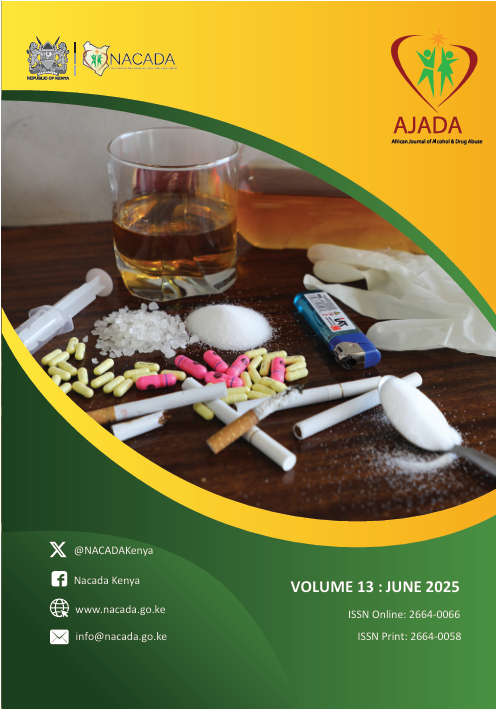Knowledge and prevalence of substance and drug abuse among secondary school students in a sub-urban area in Nigeria
Keywords:
Alcohol, Drug abuse, Knowledge, Prevalence, Semi-urban areaAbstract
Drug and substance abuse is a menace and has negative effects on individuals, families, societies, and nations. Its prevalence has been reported in different regions of the world and efforts are being geared to address it. Nigeria has witnessed the prevalence of drug abuse also in the recent years. However, most studies have been conducted in urban areas. Few studies have been undertaken in the semi-urban and rural areas. This study aims to study the prevalence of drug abuse in a sub-urban area that has neighbouring rural areas. The specific objectives are to assess the knowledge about, awareness, and use of, substance and drug of abuse among secondary students in these areas. The study is a descriptive survey of secondary school students in two selected secondary schools in Ipetumodu. Simple random sampling was employed for selecting the schools and convenience sampling was used for participant selection. A validated semi-structured questionnaire retrieved from 94 respondents out of the 102 administered questionnaires was used to obtain data from respondents. The data were analysed using descriptive and inferential statistics. The results revealed alcohol as the most known (58%), most seen (58%) and most used (15%). Morphine (5.3%) and pentazocine (5.3%) are the least known drugs and are also the least seen (4.3%). Additionally, the study showed that there is a significant association between the class level of the students and the most known, most seen, and most used – alcohol. Substantial knowledge of substances and drugs being abused exists among secondary school students in the sub-urban area, with alcohol being the most known and seen. Controlled drugs, like morphine and pentazocine, are rarely known or seen. The use of substances and drugs of abuse among secondary students should be kept low and reduced. A multi-disciplinary approach to counselling students is recommended.
Downloads
Published
Issue
Section
License
Copyright (c) 2025 Oyebode Oluwaseyi Dosunmu, Opeyemi Mary Odesanmi

This work is licensed under a Creative Commons Attribution-NonCommercial-ShareAlike 4.0 International License.


